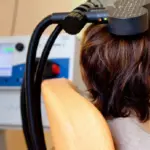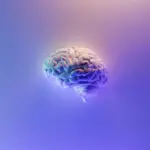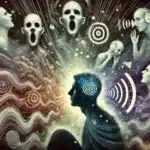There are a large number of disorders and diseases that affect the brain and its functioning. These disorders can cause or be caused because sometimes different areas of the brain do not activate enough or function in an altered manner. To solve them, different mechanisms and treatments have been developed or attempted to be developed with greater or lesser effectiveness.
One of them, not very well known but which has shown some usefulness, is transcranial magnetic stimulation
Related article: “Cognitive neuroscience: history and study methods”
What is transcranial magnetic stimulation?
The technique known as transcranial magnetic stimulation is a method or type of non-invasive intervention that is based on the application of magnetic fields controlled to stimulate the activity of nerve cells. This stimulation does not generate pain and allows control of the activity of the target brain areas.
The principle by which it works is the application of electromagnetic induction, applying electric current to an electromagnet that will be placed on the scalp in such a way that the aforementioned magnetic fields are generated (sufficiently attenuated so as not to cause damage).
Thus, these fields influence the transmission of information, facilitating brain activity (although it is not fully understood how it works) and the generation of action potentials through neuronal depolarization. The normal activation rhythm of these neurons is interrupted, something that can in turn generate delayed effects in those neurons with which those affected by the stimulation connect. It has been linked to depression and long-term potentiation.
The studies carried out at the moment seem to indicate that it is a methodology that has some effectiveness and has few risks, although it is usually used as an alternative method or as support to the treatment carried out and not as a first option (other types of treatment that have demonstrated greater consistency and effectiveness are usually preferred).
Basic procedure
The basic procedure usually followed in the application of transcranial magnetic stimulation is approximately the following. Prior to the treatment, a visit to the doctor must be made to check that the patient does not have any type of pathology or element for which this technique is contraindicated.
As for the application itself, first of all, after the patient enters the room, they will be provided with some type of barrier element such as earplugs so that they can protect their ears. Previously it should or would be recommended explain to the patient what is going to happen during the session and it may be necessary to calm the patient (without using anesthesia or sedatives).
Next, a coil with an electromagnet is placed on the scalp, placing it in the area to be stimulated. It is possible that instead of one there are two or several elements to be placed, depending on how the stimulation is carried out. Brain mapping will be carried out, introducing brief pulses to observe and locate the brain areas and their bioelectrical functioning. You are likely to notice some sensations and sounds in this phase.
After that, the doctor will proceed to Turn on the coil and regulate the intensity of the stimulation , increasing it to the motor threshold (generally until generating the contraction of the fingers). After finally reaching it, the magnetic field will be allowed to pass for a variable period of time depending on each case. These sessions can vary in number and timing, with around ten sessions being common.
Types of transcranial magnetic stimulation
There are different ways to apply transcranial magnetic stimulation Some of the main types are as follows.
1. Single-pulse transcranial magnetic stimulation
One of the ways to apply this technique is with simple pulses, through the application of a stimulus every three or more seconds, or with a train of stimuli of variable frequency over the same area for several seconds. Used in research or in the treatment of a specific problem.
2. Transcranial paired-pulse magnetic stimulation
In this case, two stimuli are applied whose intensity can be the same or different from each other, through the same coil and in the same brain region or with two different coils. Typical of the study of corticocortical connectivity
3. Repetitive transcranial magnetic stimulation
This application is one of the best known. It is based on the emission of repeated pulses , applying one stimulus (low frequency) or more (up to twenty in rapid or high-frequency rTMS) per second or less. It is usually used in the treatment of neuropsychiatric problems.
In what diseases is it used?
Although not especially recognized, transcranial magnetic stimulation It has been applied to different cerebral and psychiatric disorders Some of the best known are the following.
1. Parkinson and motor syndromes
One of the disorders in which the use of this technique is most common is Parkinson’s or problems linked to its symptoms. causing functional improvements and reduction of motor problems
2. Mood disorders
Perhaps the best-known psychiatric application of this technique is in major depression. With a functioning partly similar to electroconvulsive therapy but without its side effects it has been observed that this treatment contributes to reducing depressive symptoms if applied to the left dorsolateral prefrontal, although it requires further research.
It has also been applied in the treatment of bipolar disorder, although in this case there is a risk of inducing manic episodes. That is why in this disorder it is necessary to take special caution.
3. Neurorehabilitation
Another application area is in neurorehabilitation, using stimulation as a way to generate neuronal activation and to try to improve functionality after a brain injury. It is applied among others in trauma, heart attacks, spinal cord injuries, neglect syndromes, hemiparesis or cognitive difficulties.
4. Epilepsy
Epilepsy is a disorder in which this type of treatment has sometimes been used. It can allow the stimulation of some relevant brain areas for alleviate deterioration generated by this condition and can even facilitate the appearance of epileptic seizures in order to locate the area that generates seizures and assess the possibility of other therapeutic options.
5. Pain disorders
The use of transcranial magnetic stimulation has been proposed in the treatment of problems that cause pain, such as neuropathies and neuralgias or phantom hand pain (in amputee subjects), fibromyalgia or even migraine.
6. Neurodevelopmental disorders
There is research that suggests the use of this therapy in autism and ADHD , using stimulation of the nuclei that govern attention to cause improvements in the symptoms of these neurodevelopmental disorders and stimulating their attentional capacity. However, much more research is still needed in this regard.
7. Schizophrenia and psychotic problems
Depending on the use and the stimulated areas, it is possible to find a use for this technique in the case of schizophrenia and psychotic disorders. This is especially useful in stimulating the mesocortical pathways, so that negative symptoms are reduced. Also in some cases it can be used to treat positive symptoms by altering the brain mechanism that produces them (although there may be a risk of generating psychotic outbreaks).
Contraindications and side effects
As we have said, transcranial magnetic stimulation is generally considered a non-invasive and low-risk therapeutic option, with no major complications occurring in most cases. However, this does not mean that it cannot have annoying side effects or even be contraindicated in specific cases.
When it comes to side effects, generally patients who undergo this treatment They may experience headaches and dizziness, tingling and paresthesias on the face and scalp or even some small involuntary spasms. Occasionally, however, more serious disturbances may occur, such as hearing loss, seizures, and manic episodes. That is why, although apparently low risk, caution must be taken with its use.
Regarding people who are contraindicated for transcranial magnetic stimulation or who are required to consult or inform their doctor of the presence of specific characteristics before undergoing it, those who have implants or have a metallic element lodged in their body stand out. that could be altered by magnetic stimulation. Especially relevant is the case of pacemakers (which stimulation could alter to the point of causing death), infusion pumps, elements and valves implanted in the nervous system or cochlear implants. Something as simple as dental implants can also pose some danger, as well as shrapnel or metallic elements present in the body due to some type of accident or trauma.
People who suffer from brain injuries such as recent strokes also require special caution (although it is sometimes used to rehabilitate its effects, it is not advisable to apply it to recently infarcted subjects). Although it is used as therapy in some cases of bipolarity or schizophrenia, special caution should be taken in these cases since if the subject’s condition is not controlled the appearance of psychotic outbreaks or manic episodes may be favored The same goes for epilepsy. Those who consume any type of medication (whether psychotropic or not) should consult with their doctor first. Finally, pregnant women are also contraindicated in this treatment.









